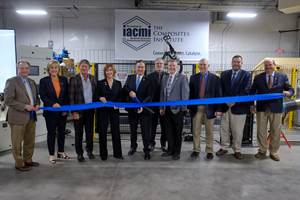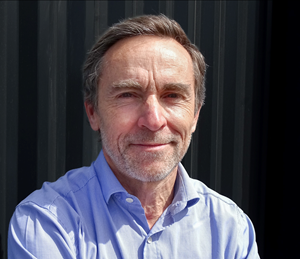Five more exciting months in composites for 2017
As I write this column, we in the Northern Hemisphere are experiencing the “dog days of summer,” that period from early July until late August when outdoor temperatures and humidity are the highest, and, it seems, business activity is at its lowest.
As I write this column, we in the Northern Hemisphere are experiencing the “dog days of summer,” that period from early July until late August when outdoor temperatures and humidity are the highest, and, it seems, business activity is at its lowest. It is during this time that many people take their personal holidays and manufacturing facilities perform annual shutdown maintenance. While composites industry activity goes on, there are typically few blockbuster announcements. That period of (relatively) low activity offers management a good time to look at the forthcoming months, and to reflect on the year to date. It seemed like a good time to do the same.
Because this will be part of the September issue of CompositesWorld, it comes out in one of the busiest times of the year for composites-related activities. And these run right up until the beginning of December. There are a host of conferences, especially in the US and Europe, starting with the SPE Automotive Composites Conference, CAMX and IBEX in three consecutive weeks in September in the US. October brings a JEC conference to Knoxville, TN, US, and the American Society for Composites meeting to Purdue University in Indiana. The Defense Manufacturing Conference and the CompositesWorld Carbon Fiber Conference highlight November. In Europe, Composites Europe highlights September, GO Carbon Fiber October and SAMPE Europe November. All these events are great for benchmarking what is going on within the world of composites, developing new contacts and business prospects.
These last months of the year are also are a big time for formulating 2018 plans and budgets for many companies, as well as research institutes, including my organization, the Institute for Advanced Composites Manufacturing Innovation (IACMI, Knoxville, TN, US). What will be the R&D emphasis for next year? What new products will be launched? What trade shows and conferences will be supported? What projects are in our pipeline and how will we resource those? What are our hiring and training needs? What capital investments will be made? What funds do we need to borrow or raise to support growth? All these decisions are taken with an eye on the longer term, aligned with an entity’s strategic plan.
With that as the future, what has 2017 brought so far? Overall enthusiasm within the industry has remained at a high level this year, and JEC Paris was clearly the most well attended and exhibitor-intensive composites trade show in history.
Back in December 2016, I predicted the wind industry would have a record year, and there is still a chance of that, although the Global Wind Energy Council (Brussels, Belgium) is projecting 60 GW of new capacity, just under the record set in 2014. What is clear is that blades keep getting longer, making wind increasingly more competitive against fossil fuels.
I also predicted that Boeing or Airbus would announce the development of a composite-winged, single-aisle aircraft in 2017, and the Paris Air Show would be the most likely place to do so. Boeing did announce a longer version of the 737MAX, and Airbus a larger version of the A380, but neither proposed a composite-winged replacement for the 737 or A320. Bombardier did reveal that its composite-winged CSeries is achieving fuel economy roughly 10% above what was promised at the program start, so perhaps the pressure to follow is ramping up.
I forecasted that a major OEM other than BMW would announce a significant volume production program with a reasonable deployment of composites in a multi-material platform. No word on that yet, but with a significant portion of the year remaining, I am still hopeful that will happen. One prediction has come true: Dieffenbacher (Eppingen, Germany) and Brötje-Automation GmbH (Grenzach-Wyhlen, Germany) have started shipping systems that manufacture high-volume, low-waste continuous-fiber preforms. FILL Gesellschaft mbH (Gurten, Austria) and several other machinery companies have announced they will have similar systems ready for evaluation before the end of this year.
My other two predictions involved positive movement on the recycling and infrastructure fronts. Excitement around recycling of advanced composites continues to grow, with fibers increasingly finding their way into consumer and industrial products. On the infrastructure front, the new administration in the US has talked about this as a priority, and it is likely to receive bipartisan support, but legislation to fund these initiatives has not made it to the front of the queue. It will be interesting to see if it can get there by December. A large US investment to repair and rebuild roads and bridges will, I hope, open opportunities for increased composites use.
It should be an exciting five months to the end of 2017, and I believe this will portend well for 2018 and beyond, especially for the composites industry.
Related Content
IACMI receives funding renewal from U.S. DOE to continue composites R&D
Over the next five years, IACMI aims to further composites R&D efforts to support U.S. decarbonization and its pillars: technology, economy and workforce development.
Read MorePeople in composites: April 2023
Concordia Engineered Fibers, Nawa Technologies, IACMI, Joby Aviation and Akarmak America have made new personnel announcements in April 2023.
Read MoreRead Next
Plant tour: Daher Shap’in TechCenter and composites production plant, Saint-Aignan-de-Grandlieu, France
Co-located R&D and production advance OOA thermosets, thermoplastics, welding, recycling and digital technologies for faster processing and certification of lighter, more sustainable composites.
Read MoreAll-recycled, needle-punched nonwoven CFRP slashes carbon footprint of Formula 2 seat
Dallara and Tenowo collaborate to produce a race-ready Formula 2 seat using recycled carbon fiber, reducing CO2 emissions by 97.5% compared to virgin materials.
Read MoreDeveloping bonded composite repair for ships, offshore units
Bureau Veritas and industry partners issue guidelines and pave the way for certification via StrengthBond Offshore project.
Read More










.jpg;maxWidth=300;quality=90)







